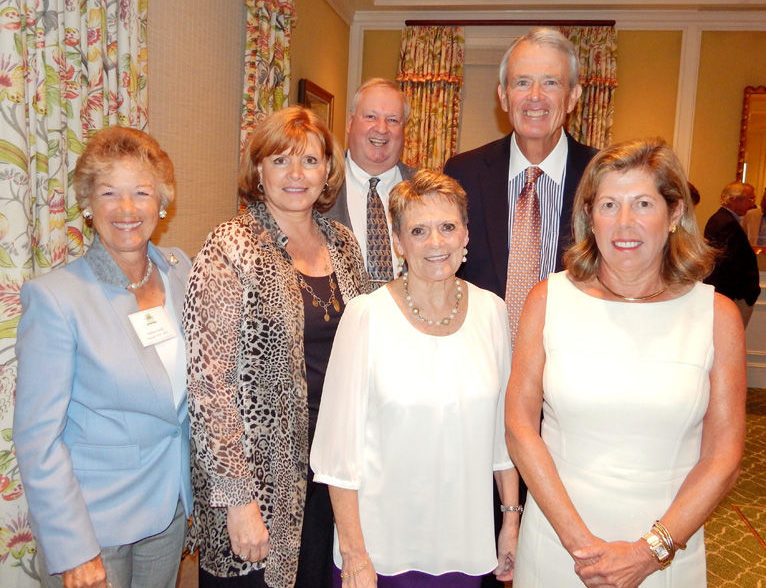
Findings from the 2014 Indian River County Children’s Needs Assessment, the first one issued since 2006, indicate disheartening levels of poverty and educational opportunities in our wealthy community, particularly as it pertains to early childhood development.
Of the roughly 17,000 children enrolled in the 2014-15 Indian River County K-12 public school system, 62 percent, meet the income eligibility guidelines to receive a free or reduced-price lunch. It is a percentage higher than the state average, and does not include pre-K, private or home-schooled students. Families are eligible if they earn up to 185 percent of the Federal poverty guidelines, which for a family of four is an unrealistic $23,850.
The study, which focuses on children under age 19 and their families, was funded by the county and prepared by the Health Council of Southeast Florida, and is based on census data, community focus groups, and analysis by the 30-member Indian River County Children’s Services Advisory Committee.
Programs for the youngest among us are at particular risk due to cuts in funding from the county from $1.25 million in 2004-05 to $623,000 in 2014-15. Last month a high-powered assemblage went before the County Commission with a plea to increase that funding.
The group included Hope Woodhouse, who serves on the Children’s Services Advisory, Kindergarten Readiness Collaborative and as vice president of the John’s Island Community Service League, Marlynn Scully, president of JICSL, Ray Oglethorpe, board chairman of The Learning Alliance, Michael Kint, CEO United Way of IRC, Meredith Egan, United Way director of Community Impact and chair of the Kindergarten Readiness Coalition, and Dr. Glenn Tremml, Healthy Start Coalition board president.
The County agreed to a 4.5 percent increase and also issued a challenge – for the group to raise $200,000 by June 1, which they would match with $200,000.
Woodhouse said that she, Scully and Oglethorpe were at the podium at the time. “We said, ‘We’ll take that challenge, sure.’ For us, taking that challenge was a no-brainer.”
A week later, to begin gathering support, the John’s Island Community Service League hosted a forum led by Woodhouse, presenting the results of the Children’s Needs Assessment to a large gathering of John’s Island residents and representatives of community funding groups and nonprofit organizations. The forum panel consisted of Oglethorpe and Kint along with Fran Adams, IRC School District Superintendent, and Robin Dapp, executive director, Substance Awareness Center IRC.
In her welcome at the forum, Scully said, “This is one of the most informative and important things the John’s Island Community Service League has ever done.”
“It’s a critically important segment of our population, because they are our future leaders. They are the people who will run our businesses, teach our children and will be running our government,” added Woodhouse. “An unfortunate fact is that this group is falling behind in almost every way, and won’t be prepared for this leadership if things don’t change.”
The challenge was quickly embraced by community funding organizations and individuals on the barrier island and the mainland, kicked off by the John’s Island Community Service League and the John’s Island Foundation each committing $50,000 and the United Way and the Indian River Community Foundation another $25,000 each.
“We have the $200,000 committed from a really broad participation. All of a sudden everybody started coming out of the woodwork. There is so much collaboration going on. From my perspective, it’s really fun. It’s always fun when you do things with more people,” said Woodhouse. “My goal is to get it as diverse as possible; that shows community commitment. There is a big need and now we have the data to prove it.”
The data shows “pockets of poverty” in Fellsmere, Gifford, Highlands and parts of central Vero, where high percentages of children are born to young, undereducated, single mothers.
Fully one-third of the county’s pre-kindergarten childcare centers are deemed poor-performing and have long waitlists for the limited free and subsidized seats. Access is even more limited for babies and toddlers. As a result, children are entering kindergarten “not ready to learn” and are often unable to catch up.
Chronic absenteeism, out-of-school suspensions and teen pregnancy rates are all higher than the state average and pay-to-play sports is limiting for students without funding or transportation. At 79 percent, the high school graduation rate is worse than in 2006 when it was 85 percent. One area of improvement, credited to the LifeSkills collaborative between the Substance Awareness Center and the School District, is a decrease in student tobacco, drug and alcohol use, although all three still exceed state averages.
Their analysis indicates four areas of greatest need:
Early childhood development – improving the quality and financial accessibility of infant to kindergarten childcare;
Building parent capacity – improving support mechanisms to enable better parent/child interactions;
Out of school recreational and enrichment – free/affordable, accessible and engaging programs;
Middle/High school behavior programs – expanding LifeSkills to include other delinquent behavior.
“We’re on our way,” said Scully. “There’s a great deal of work to be done. Through all of our efforts we can make a difference.”



